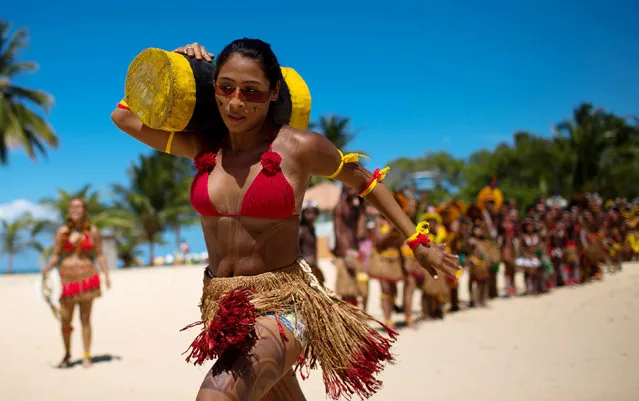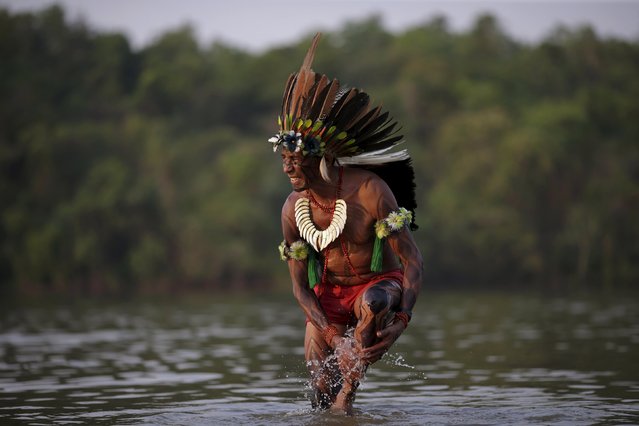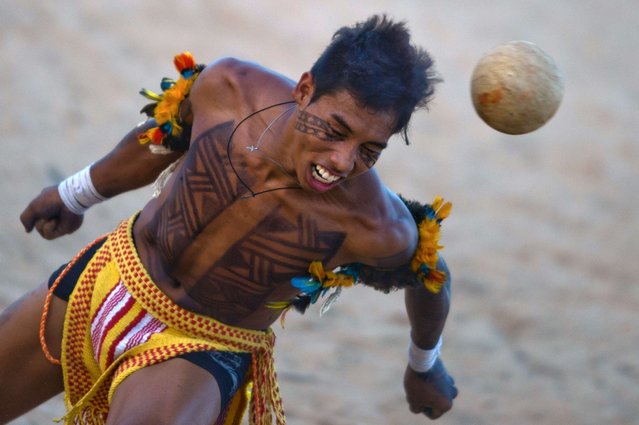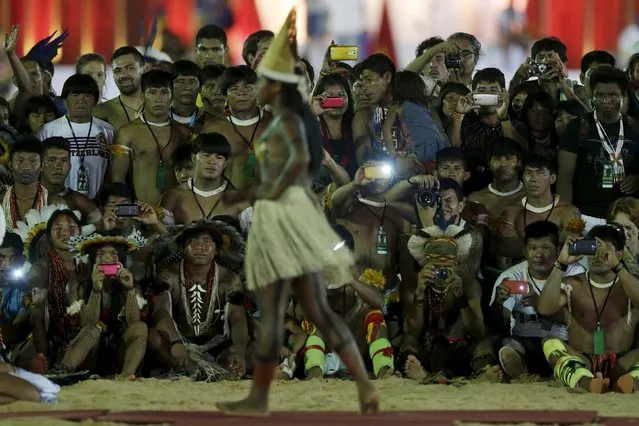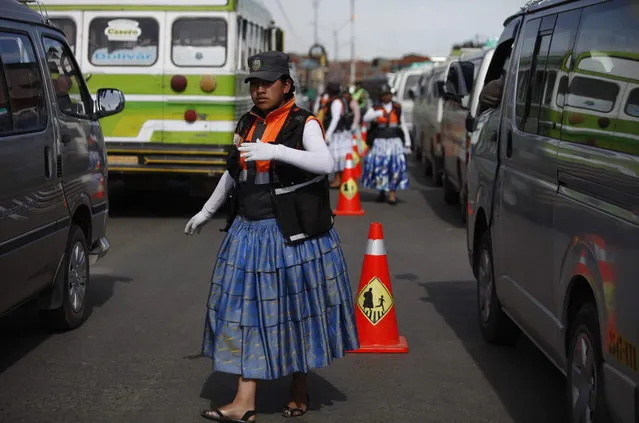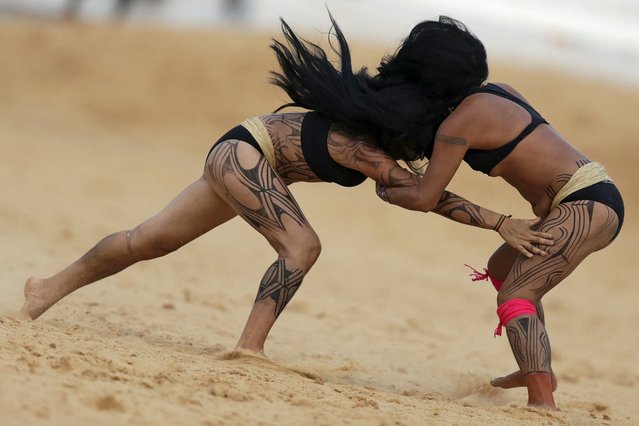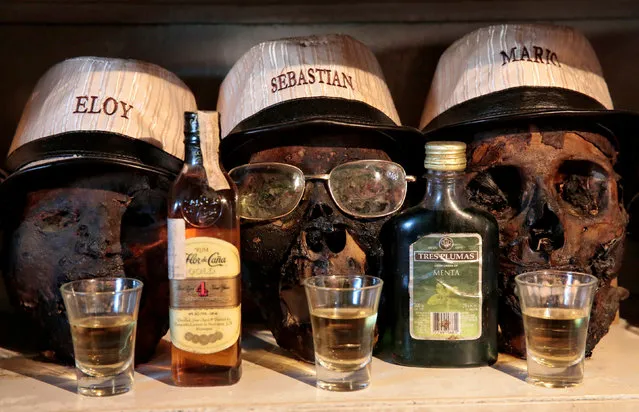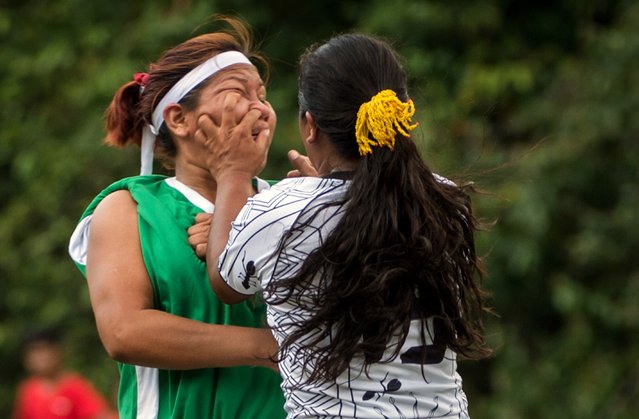
Female indigenous players vie for the ball during the final match of Peladao, the amateur football tournament, in Manaus, Amazonas state, Brazil, on November 24, 2013. Peladao is known as the biggest amateur football tournament in the world, with more than 1000 teams competing in various categories since 1973. The indigenous category was created in 2005 and eight teams participated this year. (Photo by Yasuyoshi Chiba/AFP Photo)
01 Dec 2013 10:37:00,post received
0 comments

